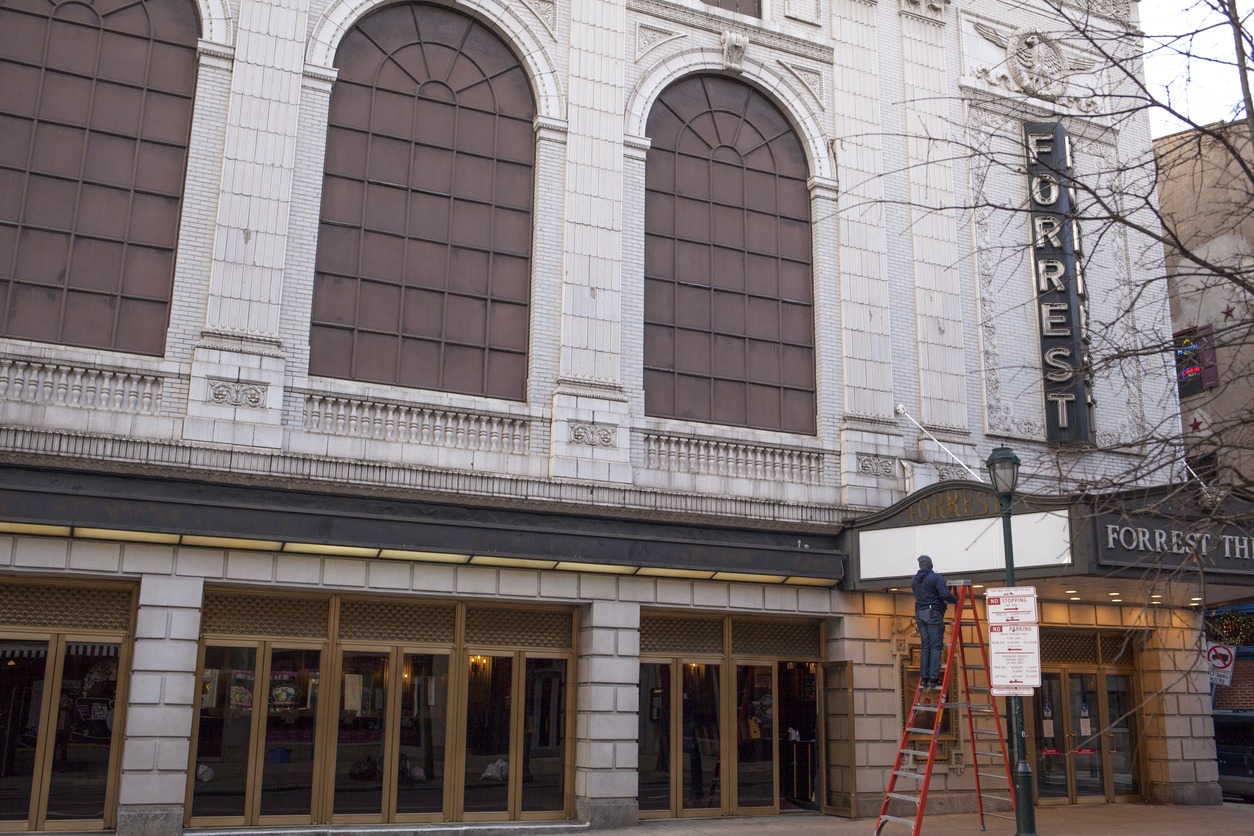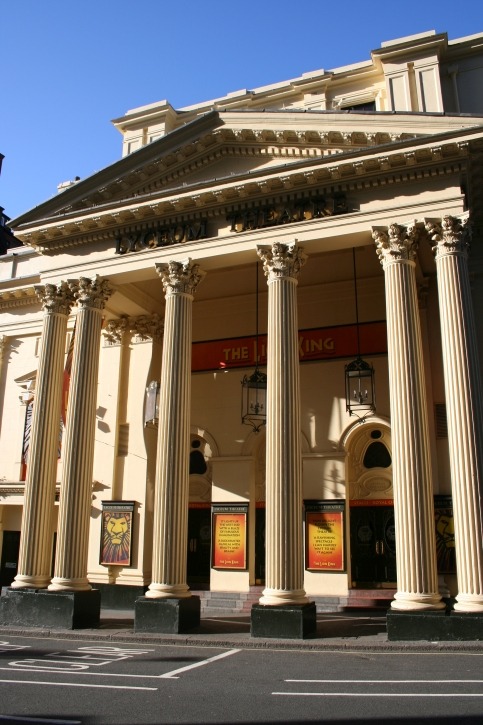The Lyceum Theatre is the oldest and most consistently functioning legitimate theatre on Broadway located at West 45th Street. Built by impresario Daniel Frohman, it’s one of the oldest surviving Broadway venues (along with the Hudson and New Amsterdam Theatres). It’s also one of the few New York theatres that continue to operate under its original name.
Two earlier New York playhouses also had a name “Lyceum Theatre.” One was The Fourteenth Street Theatre, which used the name from 1871 to 1879. Frohman himself had his own earlier Lyceum built on Fourth Avenue, which was built in 1885 and closed in April 1902. It was then replaced by the new Lyceum on 45th street. You can also read about the history of the New Amsterdam theater here.
History and Architecture
The Lyceum Theatre was built by Daniel Frohman, a Broadway pioneer and one of the first impresarios to move a theater north to the Times Square area. His brother Charles served as the theatre’s manager until his death on the RMS Lusitania that sank in 1915. Charles Frohman himself was a powerful and well-known theatre manager who most notably produced Peter Pan (1904).
Architects Herts & Tallant designed the Lyceum Theatre in the Beaux-Arts design, including its elaborate marble staircases and undulating marquee. The building boasts a fine-looking, grey limestone façade with six ornate Corinthian columns. The lobby features two grand marble staircases leading to the mezzanine, and the marble is finished to imitate the marble of Athens. Inside, the theatre featured a state-of-the-art ventilation system – the auditorium was kept warm in the winter and kept cool in the summer, as the air was passed over either steam coils or ice chambers on its way to the theatre. The auditorium itself is wide, so seats are closer to the stage to create a more intimate atmosphere.
The architects created innovative, cantilevered balconies that removed the need for posts and other structural supports, giving all patrons an unblocked view of the stage. They installed bare bulbs throughout the interior plasterwork instead of installing a chandelier, giving the interior a golden glow. The lobby is decorated with James Wall Finn’s murals that feature Sarah Siddons and David Garrick, who were famous stars of 18th-century theatre in the United Kingdom.
With a seating capacity of only 922, the Lyceum is one of the smallest Broadway theatres, despite its three levels. One of the unique features of the theatre is the ten-story tower in the back that includes the wardrobe departments, carpentry shop, painting and scene-work studios, and extra dressing room. The stage door entrance is through that building.
Frohman himself built his apartment above the theatre. A small door on the north wall of its dining room offered a bird’s eye view of the stage below. Rumor has it that Frohman waves a white handkerchief out the open door to tell his wife, actress Margaret Illington, that she was overacting. The apartment now homes the Shubert Archive.
The Depression in the 1930s took its toll on the Lyceum, and Frohman was threatened with eviction. In 1940, the theatre was acquired by a company of producers that included George S. Kaufman and Moss Hart. In 1952, the Shubert Organization took ownership of the Lyceum and had operated it ever since. The Lyceum Theatre is one of Shubert’s 17 Broadway theatres.
Notable Performances
The Lyceum Theatre opened on November 2, 1903, with the play The Proud Prince by Justin McCarthy. Other notable shows presented at the Lyceum include Augustus Thomas’ The Other Girl (1904) starring Lionel Barrymore, Charles Klein’s The Lion and the Mouse (1905), Henrik Ibsen’s A Doll’s House (1906) featuring Ethel Barrymore, and Henri Bernstein’s The Thief (1907) starring Margaret Illington. Among the other prominent performers who appeared on the Lyceum’s stage in its early years include Fanny Brice, Humphrey Bogart, Bette Davis, Billie Burke, Ina Claire, Walter Hudson, Miriam Hopkins, Basil Rathbone, and Cornelia Otis Skinner.
Garson Kanin’s Born Yesterday (1946), which was the theatre’s most successful production, propelled Judy Holliday’s career towards stardom. Other noteworthy shows in the era include Clifford Odets’ The Country Girl (1950) starring Uta Hagen, Michael Gazzo’s A Hatful of Rain (1955) with Shelley Winters, Kyle Crichton’s The Happiest Millionaire (1956) with Walter Pidgeon, John Osborne’s Look Back in Anger (1957) featuring Alan Bates, Shelagh Delaney’s A Taste of Honey (1960) starring Angela Lansbury and Joan Plowright, and Harold Pinter’s The Caretaker (1961) with Robert Shaw, Alan Bates, and Donald Pleasance.
Over the years, many new plays, revivals, and repertory companies have staged their productions at the theatre. Though it’s one of the smallest and oldest theatres on Broadway, it has found its niche as a venue for small-cast musicals, comedies, and dramas.
Among the recent notable productions held at the theatre include Athol Fugard’s Master Harold…and the Boys (1982) with Danny Glover, Martin Sherman’s Rose (2000) featuring Olympia Dukakis, Jerome Lawrence, and Robert E. Lee’s Inherit the Wind (2007), Neil LaBute’s Reasons to be Pretty (2008), and Kander and Ebb’s The Scottsboro Boys (2010). And if you want to find out the top musical acts of the 1930s, open the link.


